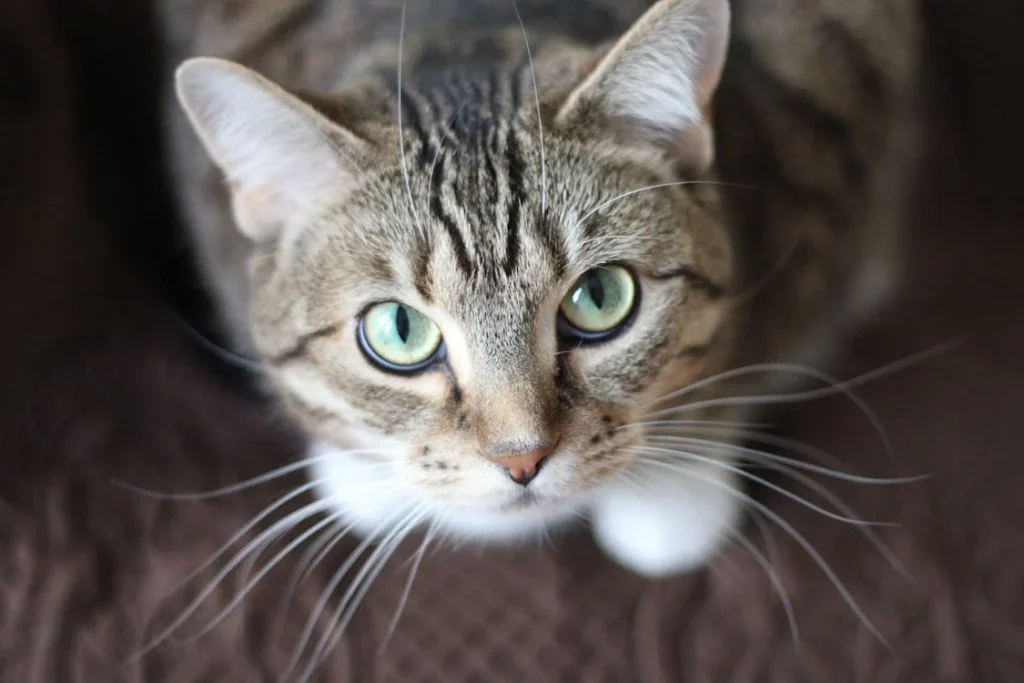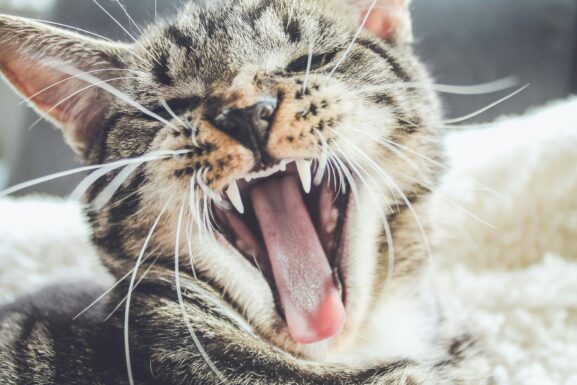What Does a Cat Sitter Actually Do?
Our cats become part of our family. So when you go travelling, it’s understandable that you want your pet to be safe and well taken care of. Many owners opt for cat sitters over catteries for their feline friends. But what are cat sitters and what do they actually do?
In this blog post, we’ll tell you everything you need to know about what cat sitting involves. Whether you are considering hiring a sitter for your cat or thinking of starting a cat-sitting business, this is a great place to start.
What is a Cat Sitter?

A cat sitter is someone who takes care of people’s pet cats while they are away from home. It’s another alternative to taking your cat to a boarding facility or cattery.
Cat sitters are often cat lovers themselves. Many will have animal care qualifications. They may specialise in only looking after cats or they may be a pet sitter who takes care of a variety of species.
Cat sitting offers more personalised care for cats in a home setting, which can be much more comfortable for our beloved pets.
What Does a Cat Sitter Do?
Cat sitters take care of cats in the owner’s home. They may stay overnight in the home or do regular ‘pop-in’ visits to tend to the cats while the owner is away. In some cases, cat sitters may take the cat to their own home to stay for the duration of the owner’s trip. Of course, this varies depending on the sitter and will be agreed upon in advance.
It’s a sitter’s job to ensure the cat’s needs are met. Basically, they make sure the cat is comfortable, healthy, and happy while the owner isn’t home.

The owner and sitter will have an initial consultation. This is when the sitter will ask questions about your cat’s health, preferences, diet, exercise, and so on. You can provide instructions about your cat’s usual routine to ensure the sitter knows what you want them to do.
If you’re using a ‘pop-in’ service, this is when you’ll agree on how often you want the sitter to come into your home and for how long. Depending on the sitter, visits typically vary between 20 minutes to an hour.
While a sitter is looking after a cat, they will provide services agreed upon with the owner. Services commonly include:
- Feeding: Ensuring your cat gets their usual meals each day.
- Cleaning: Cleaning litter trays and changing the litter, as well as tidying up any mess the cat has made around the home.
- Water: Refreshing your cat’s water each day.
- Health checks: Keeping an eye on your cat’s health and alerting you to any issues if needed.
- Playtime and cuddles: Spending some time playing with your cat and giving them human interaction (of course, this depends on what the cat enjoys).
- Medication: Giving your cat any medication or daily supplements as instructed.
Often cat sitters will provide additional services such as:
- Grooming: This may range from brushing your cat to a full groom depending on the sitter’s experience and qualifications.
- Updates: Providing pictures, videos, and regular updates on how your cat is doing.
- Jobs around the home: Some sitters will offer to collect your post, water your plans, and do some basic upkeep of your home while you’re away.
Benefits of Cat Sitting
There are lots of benefits to cat sitting, particularly when compared to many boarding facilities.
Staying At Home
This is one of the main benefits of cat sitting. Global animal welfare organisation Four Paws explains that: “Claiming territory is a part of natural feline behaviour (and that includes indoor cats).” This natural trait can make being in a new setting and around unknown cats quite stressful for kitties.
Most cat sitters will come to your home, meaning your cat can stay in their normal environment where they feel safe. They also don’t need to go through the potential stress of travelling to a new location in a car or on public transport. Even if your cat stays in the sitter’s home, it’s still a calming home environment.

These options are typically less stressful for them than being in a busy cattery environment where there are unfamiliar sights, sounds, and smells.
Personal Attention
Having previously worked in catteries, I can attest to the fact that even though employees try their best, there are a lot of cats vying for their attention. So, it can be hard for each cat to get the individual attention they would like. Of course, every cattery varies.
Cat sitters have less time pressure during visits and can focus solely on your cat while they’re visiting your home. This means your cat gets more cuddles, playtime, and love – just like they would if you were at home! Sitters can also do more thorough health checks and spend more time on the cat’s food, water, and cleaning.
Less Worry for You
A cat sitter is more likely to give you personal updates on your kitty, meaning you worry less! You might get videos and pictures so you can see that your beloved pet is doing well.
Plus, you don’t have to worry about them being stressed in an environment they’re not familiar with. So you can relax and enjoy your trip.
Routine
Just like many pets, cats are creatures of habit. Schertz Animal Hospital explains that it’s best to: “keep their routine as stable as possible for a happier cat.”
Interrupting their routine can be quite unsettling (let’s face it, we can all feel like that at times). Cat sitters are far more able to maintain a cat’s routine, which can be reassuring for them. The key is to minimise unnecessary changes while their owners are away.
Reduced Risk of Illness
A cattery environment involves lots of cats being in fairly close quarters, which can unfortunately increase the risk of contagious illnesses. Pet Boarding & Daycare Magazine states that: “Upper respiratory issues are the most common transmittable illness in cats.” They go on to say that these diseases are most commonly seen in shelters or catteries.
Of course, there are precautions put in place at catteries such as vaccinations and rigorous hygiene practices. However, with a cat sitter, you don’t need to worry about these risks.

Extra Services
Some of the extra services cat sitters provide can be really handy, such as light cleaning, putting your bins out, or collecting your post. It saves you time when you get home.
In addition, it can keep your home safer by continuing to look ‘lived in’, so potential intruders can’t tell that you are away. You can rest assured that someone is visiting your home and keeping an eye on everything for you.
How Much Do Cat Sitters Charge?

The cost of cat sitting will vary greatly. It’s hard to give an estimate, but on average you would expect to pay between £10 and £50 an hour or more.
The cost will depend on many factors, including:
- Specifics of the visit: The greatest factor that influences cost is how often the cat sitter is dropping in to visit your cat and how long they stay. Of course, the more time they spend with your cat, the more they will charge. If they stay overnight with your cat, this will cost much more than a couple of ‘drop-in’ visits a day.
- When the visit is: Visits that are on weekends or during public holidays (such as Christmas and New Year) will probably incur higher costs.
- Your location: In some areas, such as big cities, pet sitting may cost a lot more than in quieter areas. This is primarily because of the cost of living in these areas.
- Travel distance: Depending on how far the sitter has to travel to take care of your cat, costs may vary.
- Qualifications: The qualifications the sitter has will likely impact the cost. Sitters with years of experience or professional animal care qualifications will typically charge more.
- Additional services: If your sitter offers grooming, administers medication, or does chores around the house, the cost will typically be a bit higher.
Choosing The Right Cat Sitter

Now that you know all about what cat sitters do, you may be wondering how to choose one! Well, that’s where a site like ours comes in. On Cat Minder, we have lots of verified cat sitters so you can find one that’s trustworthy and within your budget. You can check out the cat sitters on offer in your area by simply entering your postcode on our site.
Whether you’re searching for a sitter on our site or somewhere else, you should look for:
- Qualifications and experience: Each sitter should make it clear which animal-related qualifications they have, as well as how much experience they have cat-sitting. You’ll want someone who knows what they’re doing! The best pet-sitting websites will require their sitters to verify their experience and identity, so you know you’re getting the best options.
- Services offered: Ensure any sitter you choose offers the services that you desire. Our site makes this clear with simple listings, so you can see the services each sitter offers at a glance.
- Insurance: It’s worth checking if your sitter has any insurance to protect against accidents while you are away. This offers extra protection and in some areas, is legally required to cat sit.
- Reviews: Take some time to check out the reviews of the sitters you’re considering. Looking at the experience of other cat owners is the best way to tell if a sitter will match your needs. You may also find sitters in your area through word of mouth.
- Budget: Of course, you’ll want to find a cat sitter that’s within your budget.
- Communication: You may want to message sitters or speak to them on the phone to ask any questions you have. This can help determine whether they’re a good fit for you and your feline friend. Once you’ve decided on a sitter, many will offer to meet you and your cat before you commit to their services.
Cat Sitters Offer Owners Peace of Mind
Leaving our pets can be difficult. We love them and of course; we don’t want them to be stressed.
Finding the right cat sitter allows you to focus on your trip, knowing that your kitty is well looked after at home. No guilt required – your cat will be right at home (literally) and ready to greet you when you get back!
References
Four Paws International, (2021), “Territorial Behaviour of Cats”.
Schertz Animal Hospital, (2024), “Cat Behavior: What Your Cat Wishes You Knew”.
Ingrid King, (2012), “Transmittable Diseases in Cats”. Pet Boarding and Daycare Magazine.



